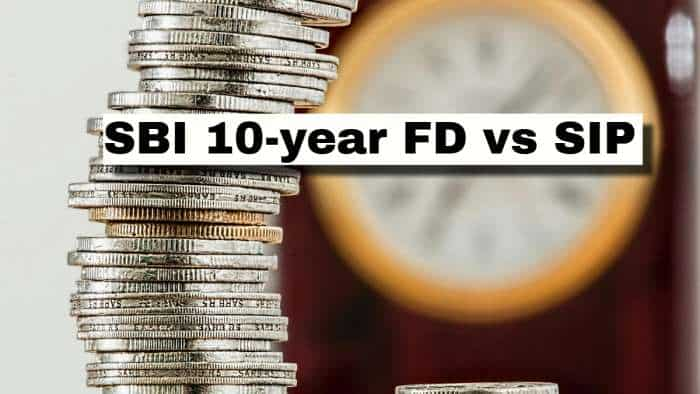Belated ITR Filing: You can file ITR till December 31 with late penalty; know step-by-step process
If you are also among those who missed the deadline of July 31 for the financial year 2022-23 and assessment year 2023-24, then you still have the last chance to file ITR. You can file belated income tax return (Belated ITR) till December 31, however, you will have to pay late penalty.
)
Belated ITR: Under income tax rules, taxpayers have to file their income tax return (ITR) by July 31 every year, but if for some reason, someone couldn't file their ITR by that date, they can still file it with a late fee. Such late filing of ITR is known as belated ITR.
It gives you the opportunity to file ITR even if you miss the original deadline.
How much penalty will have to be paid for filing belated ITR?
If you file belated ITR, then its biggest disadvantage (Disadvantages of Belated ITR) will be that you will have to pay late fees.
If your taxable income is less than Rs 5 lakh, you will have to pay a penalty of Rs 1,000 while filing ITR.
Whereas, if your taxable income is more than Rs 5 lakh, you will have to pay a fine of Rs 5,000.
How is Belated ITR filled?
Belated ITR is also filled in the same way (How to file Belated ITR) as the normal ITR, but here the section changes. Normal ITR is filed under section 139(1) of the Income Tax Act, while the belated ITR is filed under section 139(4). Know the step-by-step process of belated ITR filing.
Step 1- First of all, go to the e-filing portal of Income Tax, https://www.incometax.gov.in/iec/foportal/.
Step 2- Here enter PAN, password, and captcha code in the user ID and log in.
Step 3- You will see the e-file menu above, go to Income Tax Return and select File Income Tax Return.
Step 4- On the next page, you have to select the relevant assessment year. In the mode of filing below, online option has to be selected. Then click on Continue.
Step 5- Here you will click on Start New Filing. If you had tried filing earlier and had saved the draft, you can choose the above option.
Step 6- Here you have to click on Individual in Status Applicable because you have to file ITR-1.
Step 7- On the next page, you have to choose ITR form, where you will select ITR 1. Here you can see which type of the taxpayer has to fill which ITR form. Proceed with ITR Form 1.
Step 8- You can see here which documents you will need. Click on Let's Get Started to proceed.
Step 9- In the next page, you will tell why you are paying income tax.
Step 10: Now you have to validate the details of your pre-filled return. In this, check your details in personal details. If there are some changes in the filing section, you can edit it.
Step 11- Similarly, you will also have to validate the details of your total income, tax deduction, tax paid, and tax liability. When you have validated all the details, you can proceed. If any tax amount has to be paid now, you can do it now or later with e-pay tax service.
Step 12- Now you can see the preview of your ITR. From here, click on Proceed to Validation.
Step 13- Now you have to verify ITR. Three options will come, choose whichever option is easy and convenient for you. After e-verification, your ITR will be submitted. You can download your ITR receipt from here.
Get Latest Business News, Stock Market Updates and Videos; Check your tax outgo through Income Tax Calculator and save money through our Personal Finance coverage. Check Business Breaking News Live on Zee Business Twitter and Facebook. Subscribe on YouTube.
RECOMMENDED STORIES

LIC Saral Pension Plan: How to get Rs 64,000 annual pension on Rs 10 lakh one-time investment in this annuity scheme that everyone is talking about

Gratuity Calculation: What will be your gratuity on Rs 45,000 last-drawn basic salary for 6 years & 9 months of service?

Rs 1,500 Monthly SIP for 20 Years vs Rs 15,000 Monthly SIP for 5 Years: Know which one can give you higher returns in long term

Income Tax Calculations: What will be your tax liability if your salary is Rs 8.25 lakh, Rs 14.50 lakh, Rs 20.75 lakh, or Rs 26.10 lakh? See calculations

8th Pay Commission Pension Calculations: Can basic pension be more than Rs 2.75 lakh in new Pay Commission? See how it may be possible

SBI Revamped Gold Deposit Scheme: Do you keep your gold in bank locker? You can also earn interest on it through this SBI scheme

Monthly Pension Calculations: Is your basic pension Rs 26,000, Rs 38,000, or Rs 47,000? Know what can be your total pension as per latest DR rates
04:45 PM IST











 Income Tax Rules: 5 key changes you must know for filing ITR next year
Income Tax Rules: 5 key changes you must know for filing ITR next year Don't have Form 16 and want to file income tax? This is how it is possible
Don't have Form 16 and want to file income tax? This is how it is possible